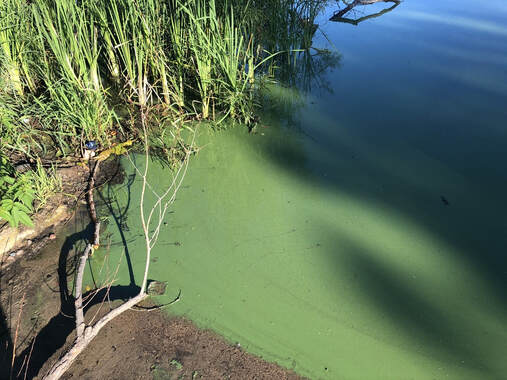Crystal Lake Management Plan
|
The Commission partnered with the City of Robbinsdale to improve the health of Crystal Lake. The lake does not meet state water quality standards for nutrients, and Robbinsdale has been working to reduce nutrients getting to the lake from the surrounding watershed. The focus has now turned to managing conditions in the lake itself. In 2020 the Commission worked with City staff to survey the population of carp in the lake and found that carp were abundant enough to have a negative impact on water quality. Lab analysis of samples of lake bottom sediment showed there was a high potential to release phosphorus under low oxygen conditions that are common in the summer. Phosphorous is a nutrient that supports plant growth. When too much is in our lakes, it causes problems such as excessive algae growth, low levels of oxygen for aquatic life, and murky water which makes it difficult for healthy aquatic plants to grow. The Crystal Lake Management Plan aimed to improve water quality in Crystal Lake through targeted carp removals and aluminum sulfate (alum) treatments.
|
Crystal Lake Alum Treatment Fall 2021 & 2022
|
Active lake management began on Crystal Lake in Spring 2021 with carp management and continued with two planned alum treatments in September 2021 and 2022. Alum binds to phosphorus, making it unavailable to algae, thus limiting algae growth and increasing water clarity. Scientific studies show that alum is safe for fish, invertebrates, and humans. Alum is currently used for treating drinking water as well as in food and cosmetics. The alum treatments made an immediate improvement in water clarity and reduced phosphorous in Crystal Lake, though further improvements are still needed for the lake to meet water quality standards. The alum treatment is not toxic to humans or wildlife.
Check out the Watershed's Facebook page to see some incredible drone footage from the September 30th, 2022 alum treatment. |
|
Carp Management Summer 2021-2024
|
While the alum treatments were an important first step towards improving water clarity and quality in the lake, there is still another problem to be tackled in Crystal Lake: the common carp infestation. Common carp are bottom-feeding, non-native fish and have negative impacts on lakes by stirring up sediment, uprooting vegetation, and removing habitat for native fish species. Efforts to trap and permanently remove carp from the lake began in June 2021. A combination of netting techniques was used to bait and trap carp in the lake.
During the summers of 2021-2024 the Commission's contractor deployed three box nets on the south shore of the lake. The box nets were regularly baited with cracked corn, the same corn often used for chicken feed, to entice carp into regularly visiting the box nets. The nets were periodically drawn up to capture the carp, which were removed from the lake. In total, 9,641 carp were captured and removed from the lake, bringing the carp biomass in the lake down from 317 pounds per acre to 105 pounds per acre. The goal of carp management was to achieve 89.9 pounds per acre or less, which is the density at which carp begin to have negative impacts on lake ecology. See the final carp management report here. |
Funding for this project was provided by the Minnesota Pollution Control Agency through a Grant from the United States Environmental Protection Agency, Section 319 Nonpoint Source Management Fund, and by the Shingle Creek Watershed Management Commission.
|
Moving Forward
Lake users can expect improved water clarity, reduced phosphorus levels, and better habitat for native fish for years to come following the alum treatment and carp management. The Commission will continue monitoring water quality and carp biomass in Crystal Lake and plans to continue management in the future.

